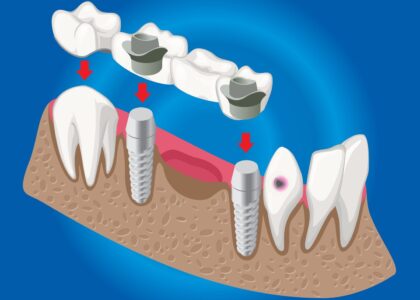Introduction
In the ever-evolving landscape of dental implantology, zygomatic implants have emerged as a groundbreaking solution, particularly for individuals with severe maxillary atrophy. Traditional dental implants may face challenges in cases where the bone structure has diminished significantly, making it difficult to anchor implants securely. Zygomatic implants, named after the zygomatic bone they utilize, offer a novel and effective alternative, providing hope and restoration for those facing complex dental issues.
- Understanding Zygomatic Implants: Zygomatic implants are long screws designed to anchor directly into the zygomatic bone, which is the cheekbone. Unlike conventional dental implants that rely on the maxillary bone for support, zygomatic implants take advantage of the sturdy zygoma to provide a stable foundation for dental prosthetics.
- Indications for Zygomatic Implants: Zygomatic implants are typically recommended for patients with significant maxillary bone loss due to conditions such as long-term tooth loss, trauma, or congenital issues. Individuals who have experienced chronic periodontal disease leading to severe bone resorption may also benefit from this advanced dental solution. Zygomatic implants are particularly advantageous in cases where conventional implant procedures may be challenging or impossible.
- The Surgical Procedure: The placement of zygomatic implants involves a specialized surgical technique. During the procedure, the oral surgeon gains access to the zygomatic bone through the oral cavity or, in some cases, through a small incision in the cheek. The implant is then carefully positioned and anchored into the zygoma, providing a stable platform for the attachment of dental prosthetics. Advanced imaging technologies, such as 3D cone beam computed tomography (CBCT), play a crucial role in planning and executing the surgery with precision.
Benefits of Zygomatic Implants:
- Single-Stage Procedure: Unlike some traditional implant procedures that require multiple stages, zygomatic implants often allow for a single-stage surgery, reducing overall treatment time.
- Immediate Loading: In certain cases, immediate loading of the implants with a provisional prosthesis may be possible, allowing patients to enjoy restored functionality and aesthetics shortly after the surgery.
- Avoidance of Bone Grafts: Zygomatic implants eliminate the need for extensive bone grafting procedures, streamlining the treatment process for patients with compromised maxillary bone density.
Considerations and Potential Complications:
While zygomatic implants have demonstrated significant success, careful patient selection and thorough preoperative planning are essential. Complications, though rare, can include issues such as sinus complications, nerve injury, or prosthetic complications. Therefore, a comprehensive assessment by a skilled oral surgeon is crucial to ensuring the suitability of zygomatic implants for each individual case.
Conclusion
Zygomatic implants represent a revolutionary stride in the field of oral surgery, offering a lifeline for individuals facing complex dental challenges. This advanced technique not only addresses the limitations of traditional implants in cases of severe maxillary atrophy but also provides a more efficient and patient-friendly solution. As technology continues to advance, zygomatic implants stand as a testament to the commitment of the dental community to explore innovative approaches for improving oral health and restoring smiles in even the most challenging cases.

